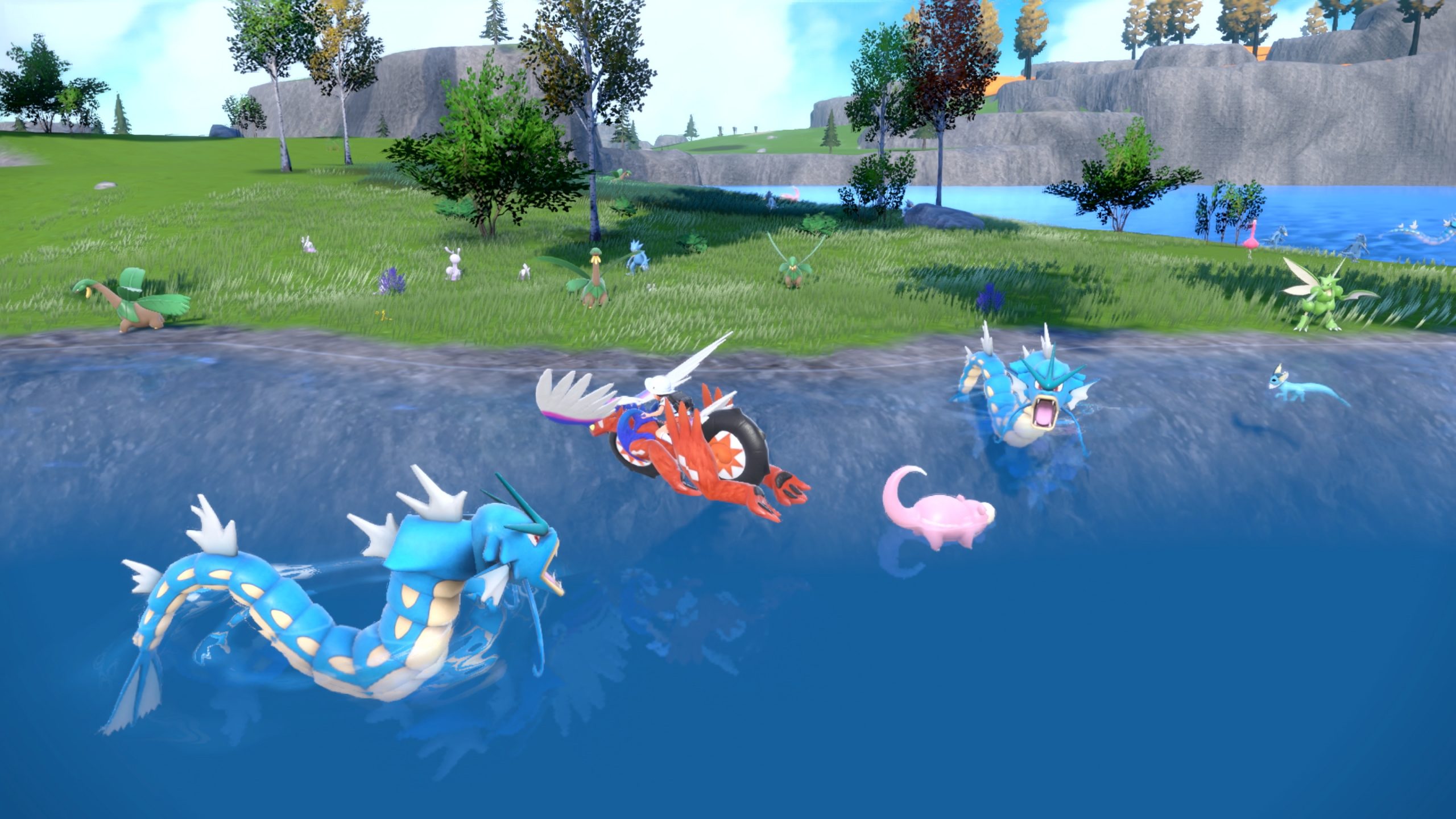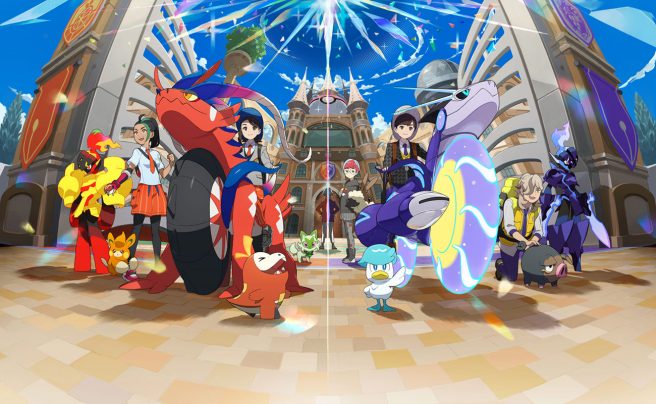Why Pokemon Scarlet and Violet feel like new games on Nintendo Switch 2
Almost three years after their original release, Pokemon Scarlet and Violet have received a performance patch on Nintendo Switch 2. Today, we’re talking all about its improvements.
It’s no secret that things haven’t exactly been smooth sailing for the Pokemon series on Nintendo Switch. The release of Pokemon Sword and Shield saw one of the franchise’s biggest controversies yet – for the first time, a majority of Pokemon were cut and made completely unavailable in the game. That would be somewhat understandable on its own, but the developers went on to explain that those Pokemon were cut so the team could focus on “high-quality animations”. That statement sort of led more “dedicated” Pokemon fans to view the games with increased scrutiny, and the series hasn’t had the same reception since. When Pokemon Scarlet and Violet launched on Nintendo Switch 2, players did notice that the games were ambitious with their new open world – but its implementation drew criticism, and of course the games’ subpar performance and low visual quality were noted as well.

I can’t possibly understate how much of an improvement Pokemon Scarlet and Violet are on Nintendo Switch 2. But to understand just how much of an improvement that is, we need to remember just how poorly the games ran on the original Nintendo Switch. For one, they targeted 30 frames per second, but rarely ever reached that – the frame rate often wildly fluctuated. In areas like Casseroya Lake, the game sometimes struggled to even hit 20 FPS, especially if it was raining in the overworld. Considering how plain the landscapes and water look, this performance was extremely difficult to accept for some Pokemon fans. And understandably so! Even Pokemon Sword and Shield, which received tons of criticism for different reasons, mostly kept a stable frame rate and were low on major visual glitches.
Fortunately, many of these issues are completely fixed on Nintendo Switch 2. The frame rate now targets a smooth 60 frames per second, and that change alone helps eliminate some (but not all) of the “cheap” feeling you’d get roaming around the world originally. Even at Casseroya Lake during a thunderstorm, the game holds strong and barely drops frames (if it did, I didn’t notice, and I’m fairly sensitive to changing frame rates). The frame rate increase really helps the games feel faster, plus it helps you appreciate the care and effort that went into each individual Pokemon’s model. Each one has lots of small details and texture work – Seviper has visible scales, Magnemite has a reflective steel texture, and Scizor has a shiny crimson glare that makes it look so much cooler. Every single Pokemon has details like this, though some are more noticeable than others. Considering these visually appealing Pokemon models are then dropped into a visually unappealing world, though, it’s easy to see why all of these texture improvements have flown under the radar over the years.
Indeed, the Nintendo Switch 2 performance patch doesn’t address any of Scarlet and Violet’s graphical issues. Grassy fields look flat and empty, cliffsides look flat and empty and have a clearly repeating texture, and the water is a simple gradient that lacks any real detail. This is absolutely Pokemon Scarlet and Violet’s fault, not the original Nintendo Switch’s – look at Xenoblade Chronicles X: Definitive Edition, which targets 30 frames per second but is visually gorgeous with tons of details present in the overworld. Meanwhile, Scarlet and Violet on Nintendo Switch 1 run poorly and look pretty bad, which is a nasty combination for a game that was sold for full price.
Still, if you can get past the empty-looking landscapes, Pokemon Scarlet and Violet have an incredibly addictive gameplay loop that’s more accessible than ever thanks to the improved frame rate. Running around the open world and catching Pokemon is still great fun, as well as collecting and breeding creatures for your Pokedex. Raising competitive Pokemon is easier than ever, not to mention the fact that Tera Raid Battles work so much better on Nintendo Switch 2. The improved frame rate almost makes them feel competent – key word being “almost”. They still suffer from a few strange occurrences and minor glitches here and there, but they no longer feel like a total wreck like they did previously. You could argue that the fact we had to wait over two years for a new console to play Scarlet and Violet with acceptable frame rates isn’t ideal, and that’s absolutely right. In any case, I’m glad they decided to release these updates for free – it’s definitely got me playing again, and if you have any interest I’d absolutely recommend revisiting the games to see how much better they feel.
As for future Pokemon games in the series, it seems like Pokemon is finally taking their time with Pokemon Legends: Z-A. There hasn’t been an all-new Pokemon game released since Scarlet and Violet, and there were no main series games or DLC content released in 2024 at all. The combination of Pokemon Brilliant Diamond and Shining Pearl, Pokemon Legends: Arceus, and Pokemon Scarlet and Violet released in under a year’s time was definitely a Pokemon overload of sorts. And it seems the Nintendo Switch 2 Edition of Pokemon Legends: Z-A is set to run at a smooth 60 frames per second, becoming the first new game to do so at all times (other than Scarlet and Violet) since the third generation. That’s a promising start!
Have you revisited Pokemon Scarlet and Violet on Nintendo Switch 2 yet? If so, feel free to share your thoughts with us in the comments down below.
